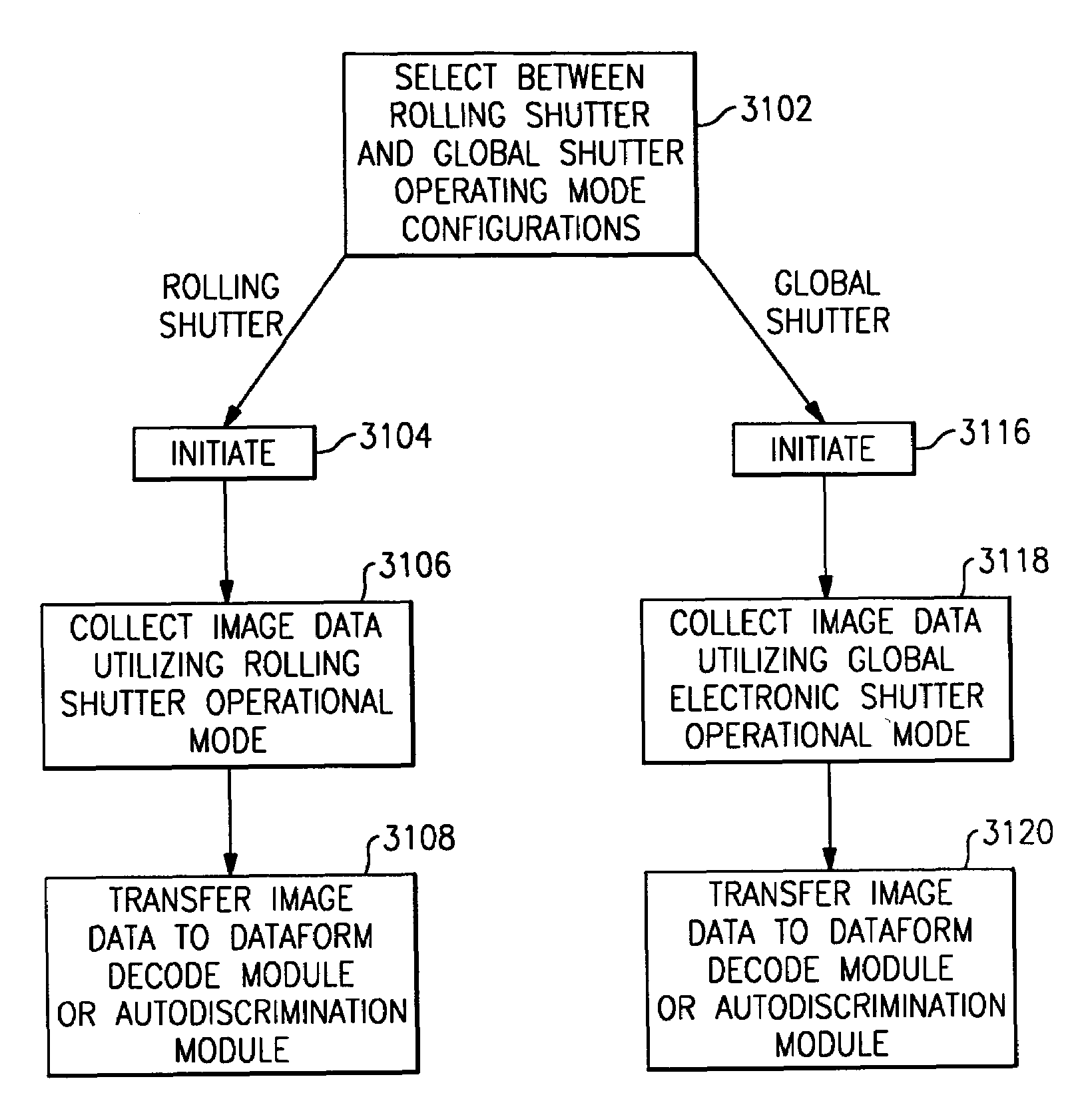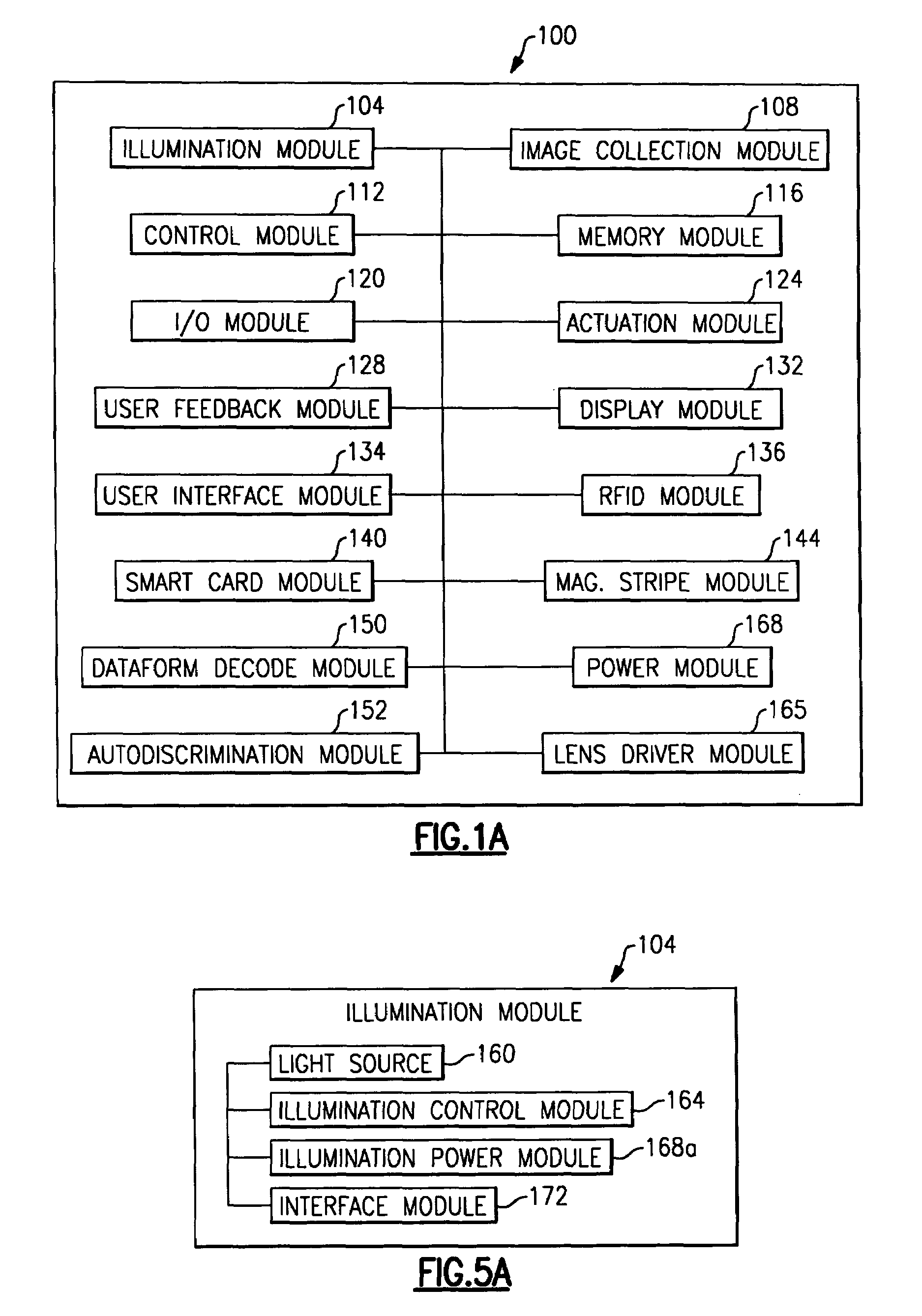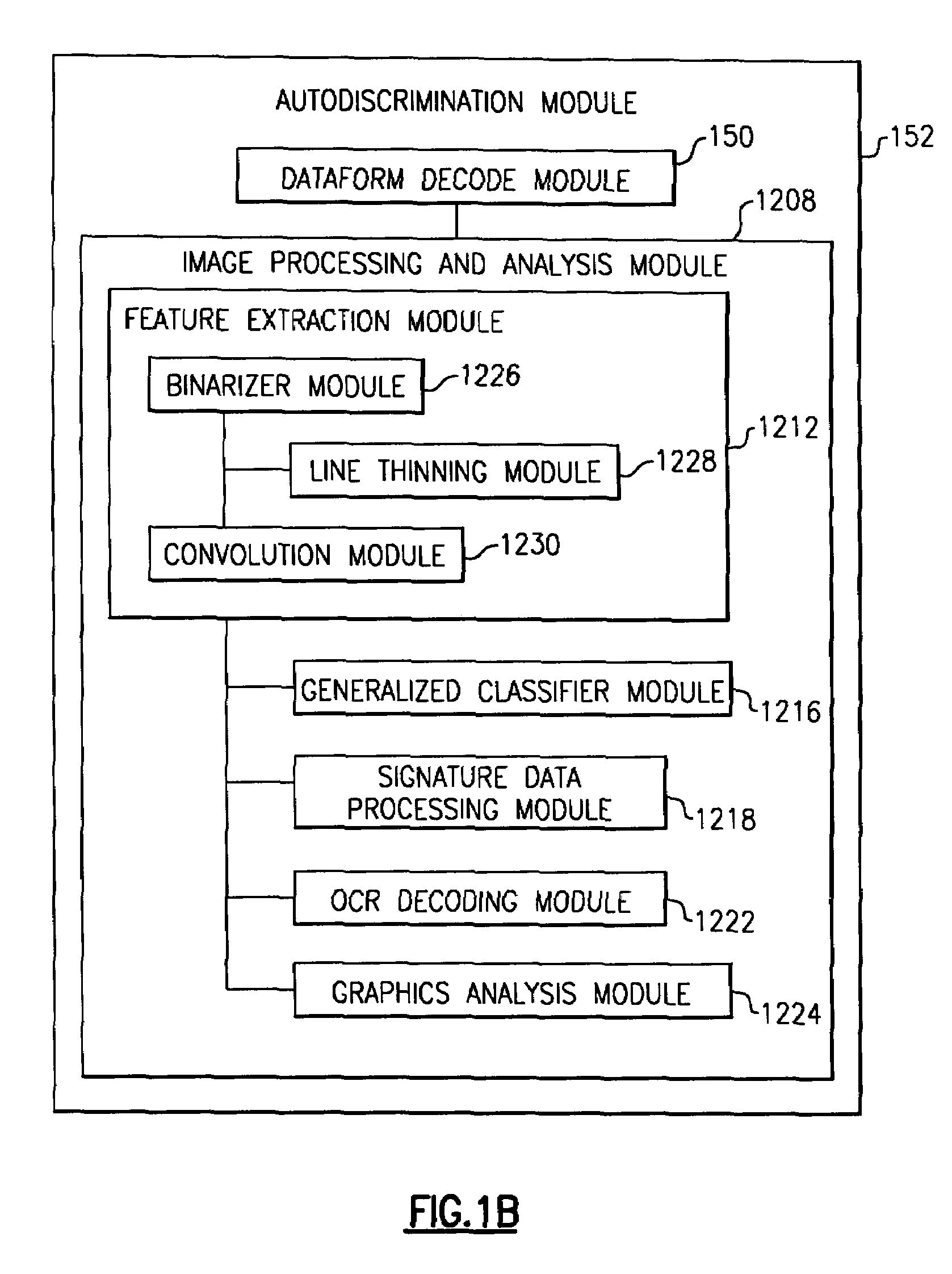System and method to automatically focus an image reader
a technology of automatic focus and image reader, applied in the field of image data collection, can solve the problems of image distortion and image blur, the architecture of the rolling shutter suffers from at least two disadvantages, and the effect of image data degradation is the most prominent, so as to minimize the degradation of ambient light image and minimize the effect of image data degradation
- Summary
- Abstract
- Description
- Claims
- Application Information
AI Technical Summary
Benefits of technology
Problems solved by technology
Method used
Image
Examples
Embodiment Construction
[0061]The invention features an image reader and a corresponding method for capturing a sharp non-distorted image of a target. In one embodiment, the image reader comprises a two-dimensional CMOS based image sensor array, a timing module, an illumination module, and a control module all in electrical communication with each other. The illumination module shines light on the target, such as a symbology such as one or two-dimensional bar code, so that reflected light that can be collected and processed by the image sensor array. The time during which the target is illuminated is referred to as the illumination period. The capture of the image by the image sensor array is driven by the timing module that, in one embodiment, is able to simultaneously expose all or substantially all of the pixels in the array. The simultaneous exposure of the pixels in the sensor array enables the image reader to capture a distortion free image. The time during which the pixels are collectively activated...
PUM
 Login to View More
Login to View More Abstract
Description
Claims
Application Information
 Login to View More
Login to View More - R&D
- Intellectual Property
- Life Sciences
- Materials
- Tech Scout
- Unparalleled Data Quality
- Higher Quality Content
- 60% Fewer Hallucinations
Browse by: Latest US Patents, China's latest patents, Technical Efficacy Thesaurus, Application Domain, Technology Topic, Popular Technical Reports.
© 2025 PatSnap. All rights reserved.Legal|Privacy policy|Modern Slavery Act Transparency Statement|Sitemap|About US| Contact US: help@patsnap.com



